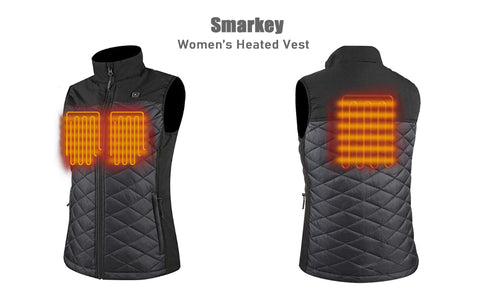The Heating Principle and Heating Areas of Electrically Heated Clothing
Electrically heated clothing is a collective term for garments(heated jacket & heated vest)that consist of a power source, temperature control device, safety protection mechanisms, and heating elements connected through conductors to form a circuit. These garments use the power source to control heating elements inside the clothing, generating warmth. Initially developed for soldiers, workers, and outdoor enthusiasts in cold environments, electrically heated clothing aims to provide warmth, reduce frostbite, and ensure better working or exercising conditions by maintaining a comfortably warm state.
1. Heating Principle of Electrically Heated Clothing
By utilizing a mobile power source, the heating elements (flexible heating pads) of electrically heated clothing(heated jacket & heated vest) convert electrical energy into heat, providing warmth to the body and defending against extreme cold. The temperature of the electrically heated clothing(heated jacket & heated vest) can be adjusted using the temperature control device, allowing users to set the most suitable and comfortable temperature based on environmental conditions and personal preferences. Safety protection mechanisms within the clothing automatically adjust to lower settings at higher temperatures, ensuring constant warmth. Additionally, the system is designed to automatically power off when not in use, preventing concerns about forgetting to switch off the power. Multiple safety measures like overvoltage protection, overcurrent protection, and short circuit protection ensure utmost safety.

2. Heating Areas of Electrically Heated Clothing
Electrically heated clothing (or heated garments) primarily refers to three main types of clothing: jackets, pants, and shoes. Jackets include electrically heated cotton jackets, electrically heated down jackets, electrically heated ski jackets, heated vests, heated vests, and heated hoodies. The heating areas of jackets primarily cover the chest, abdomen, back, and waist. Pants focus on heating the abdomen, waist, and knees, while shoes primarily heat the soles of the feet.
Overall, the heating areas of electrically heated clothing(heated jacket & heated vest) target crucial body areas prone to cold. In cold environments, these garments provide warmth primarily to important areas such as the abdomen, back, waist, and knee joints, ensuring overall body warmth. This targeted heating not only warms specific body parts but also facilitates overall body warmth, providing a highly comfortable experience.
Furthermore, some researchers suggest incorporating heating elements in the sleeves of electrically heated clothing(heated jacket & heated vest). Limbs lack internal organs to generate heat and are distant from the heart, resulting in lower blood temperatures. Heating the elbow and wrist joints in the sleeves helps maintain warmth in these areas, promoting blood circulation, preventing coldness, and compensating for heat loss between the torso and arms. This helps reduce heat expenditure from the upper body, resulting in better insulation.
Electrically heated clothing(heated jacket & heated vest) represents one of the most extensively researched and technologically mature heated clothing types globally. The heating temperature and areas of electrically heated clothing can be customized as per requirements.